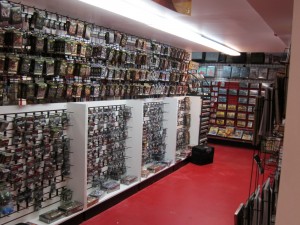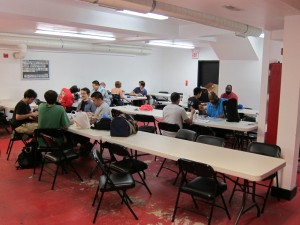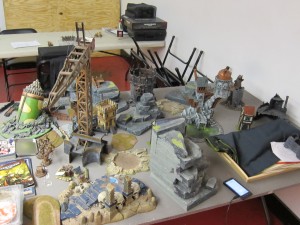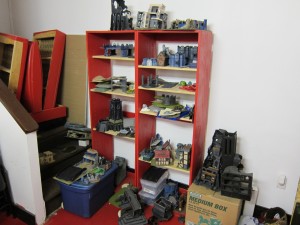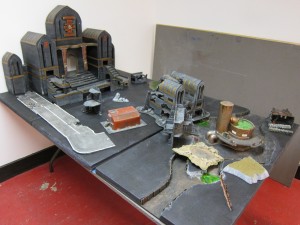Tonight at PAGE, Jason, Valerie, Colin, and I got in my first match of sixth edition 40k. Colin and I teamed up for a 2 on 2 of Space Marines and Imperial Guard versus Jason’s Deathwing Dark Angels and Valerie’s Eldar. It was mostly a learning game as Jason coached Valerie in her very first game of 40k, with Colin also talking up changes for sixth edition.
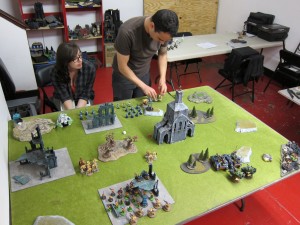
Jason prepares for his doom!
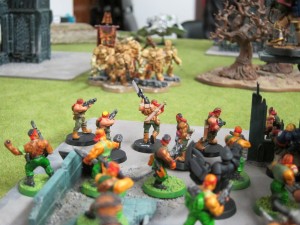
Catachans stare down the oncoming treacherous Dark Angels.
There are definitely a lot of details all over the place that have changed and will require some attention to not overlook. So far among the perhaps small yet I think consequential changes is that Rapid Fire weapons can now fire once at the full range, even after moving. When I started playing 40k, two things really bothered about Space Marine Tactical Squads: 1) They didn’t have pistols, so they couldn’t shoot a unit they were about to assault. 2) They couldn’t move and shoot at range. Both of these really cut down their options and just didn’t make much sense. The previous edition took care of the first one, so it’s nice now for that second point to be closed up.
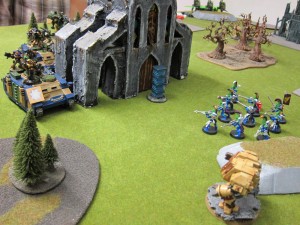
Kingbreakrs and Eldar race for the central objective.
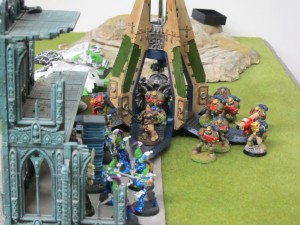
Kingbreakers heroically assault deep into enemy lines.
Another interesting bit I had not caught up to until the game is that leaving Space Marine Drop Pods is a standard disembark, which now basically has a 6″ bubble around the vehicle. That’s quite a bit of room to get out, move around, and shoot stuff up or dive into cover.
Focus Fire is also something of which good use of is going to be the hallmark of a good player over an average player. It probably won’t have huge effects, but I think appropriate use of it could really help you out at times, and it presents a strong strategic tradeoff between more possible kills versus more likely kills.
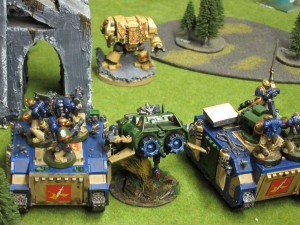
A Dark Angel ancient stands fast in the face of the Kingbreaker attack.
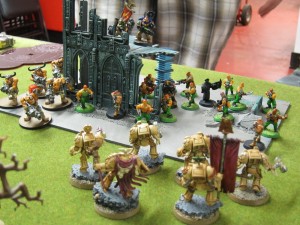
The Dark Angels have neither mercy nor fear for the fallen.
Overall, I remain optimistic about the new edition. In a few places it seems a bit more fiddly than the previous one, but not overly so. Certainly there is a ton of new stuff in the rulebook, like flyers and terrain, but I think a lot of that can be safely set aside until everyone’s ready to incorporate it. Or, you know, somebody shows up with a Stormtalon and everybody has to get ready in a hurry.
On a largely unrelated side note, the just-released Dark Vengeance box sets are absolutely amazing. It seems like a great value at $107 for 49 miniatures (I guess $99 for 48 in the standard edition), and those miniatures are absolutely amazing. The cultists in particular are super cool looking and extremely detailed. I had to work really hard to impose some self-discipline and not pick up a box.



